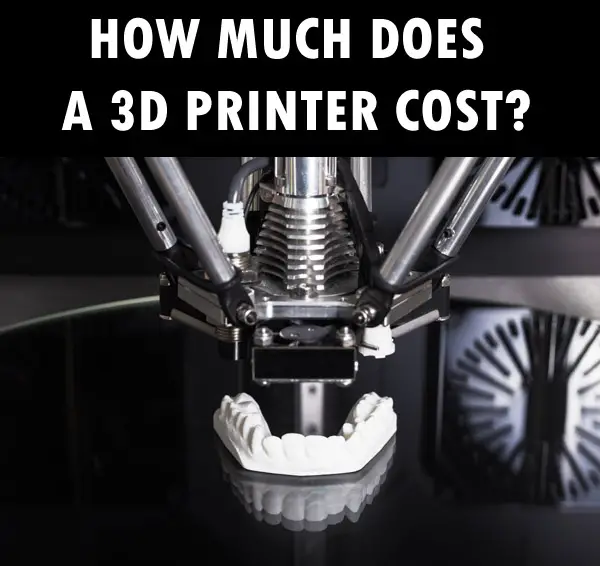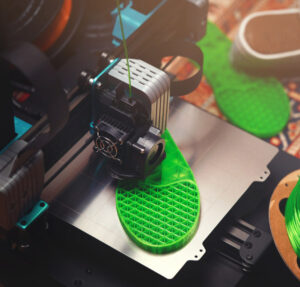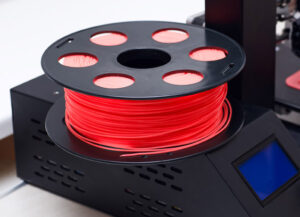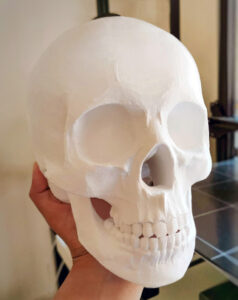The world of 3D printing is expanding every year with new technologies, new printer models, and even new printer makers appearing all the time. With all this happening, printer prices are dropping due to competition, changes in technology, and cost of production.

In the following article we will describe what 3D printers can cost based on type, application and the other several factors which determine price. Let’s get started.
The price of a 3D printer can range depending on its type, size, place of manufacture, brand, printing technology, etc. But the cost of owning 3d printer does not stop there. We will discuss material costs for various filament and resin types used in 3D printing projects, maintenance costs, repairs, operator time, and energy costs involved. Various printers have their particular “cost per part printed”, and this again depends on many factors, some of which include cost to print the part and material cost.
Types of 3D Printers

Having a reliable and efficient 3D printer is crucial for students and professionals alike. With various types of printers available in the market, it’s essential to understand their differences, advantages, and disadvantages before making an investment.
Fused Deposition Modeling (FDM)
FDM is one of the most popular methods for desktop 3D printing. It works by melting thermoplastic filament material layer-by-layer onto a build platform to create a solid object based on digital design files. The primary advantage of FDM printers lies in their affordability compared to other technologies while still offering decent print quality.
- Advantages: Affordable; wide range of materials; user-friendly operation.
- Disadvantages: Lower resolution than SLA or SLS; limited geometric complexity due to support structures needed during printing.
Stereolithography (SLA)
Stereolithography uses ultraviolet light projected into liquid photopolymer resin that hardens upon exposure, forming each layer as it builds up from bottom-to-top within a vat filled with resin (source). This technology offers higher precision prints with smoother surface finishes compared to FDM, making it ideal for intricate designs and prototypes.
- Advantages: High resolution; smooth surface finish; capable of printing complex geometries without support structures.
- Disadvantages: More expensive than FDM printers; limited material options (mostly resins); post-processing required to remove supports and cure prints.
Selective Laser Sintering (SLS)
SLS technology utilizes a high-powered laser to fuse powdered materials such as nylon or metal into solid layers based on digital design files (source). This method allows for the creation of highly detailed parts with excellent mechanical properties, suitable for functional prototypes or end-use products in various industries like aerospace, automotive, and medical devices.
- Advantages: High precision; strong mechanical properties; no need for support structures during printing process.
- Disadvantages: Expensive equipment and material costs compared to other technologies; higher energy consumption during operation;
Cost of 3D Printer Itself
The expense of owning a 3D printer can differ significantly depending on the type, size, place of origin and any extra features or capabilities it may have. To ensure you are making an informed decision when selecting a 3D printer for your scientific projects, we will explore the various factors influencing cost such as type and size of the printer, its place of manufacture, and any additional features or capabilities.
Printer Category
Beginner 3D printers
Beginner 3D printers are usually the most affordable, with prices ranging from around $200 to $500. These printers are generally designed for home use and hobbyists, and they typically have smaller build volumes and lower print quality than professional or medical-grade printers. They may require more setup time for each print and more playing around with the output to get the best results. Examples of beginner 3D printers are the Creality Ender 3 and the Anycubic Cobra Neo.
Professional 3D printers
Professional 3D printers are designed for businesses and organizations that require high-quality prints and larger build volumes. Prices for these printers can range from around $2,000 to $10,000 or more. Professional-grade printers are capable of printing with a wide range of materials and can often produce highly detailed, intricate parts, with greater reliability. Examples of professional 3D printers include the Ultimaker S5 and the IEMAI HT-L.
Medical 3D printers
Medical/scientific 3D printers are designed for the healthcare industry and are used to produce medical implants, prosthetics, and other devices, as well as use bioresins which may be utilized to print scaffolding for living tissue. Prices for medical-grade printers can range from $10,000 to $100,000 or more, depending on the specific application and features required. Medical 3D printers must meet stringent regulatory requirements, which can contribute to their high cost. Examples of medical 3D printers include the Stratasys J750 Digital Anatomy Printer and the Formlabs Fuse 1.
Printer Type and Size
As mentioned earlier, there are three main types of 3D printers: Fused Deposition Modeling (FDM), Stereolithography (SLA), and Selective Laser Sintering (SLS). Each type has its own unique set of features that affect their price range:
- FDM Printers: These are typically the most affordable option among all types, with prices starting from around $200 for entry-level models like the Monoprice Select Mini , up to several thousand dollars for professional-grade machines such as those offered by Ultimaker.
- SLA Printers: SLA printers tend to be more expensive than FDM printers due to their higher resolution output capability. Prices start at around $1,000 for beginner-friendly options like the Peopoly Moai Kit, while high-end models from companies like Formlabs can cost upwards of $5,000.
- SLS Printers: SLS technology is generally reserved for industrial applications, and as such, these printers are the most expensive among all types. Prices for SLS machines start at around $10,000 for smaller desktop models like the Sintratec Kit, while larger-scale systems can cost hundreds of thousands of dollars.
In addition to printer type, size also plays a role in determining cost. Larger printers with bigger build volumes will typically be more expensive than their smaller counterparts due to increased material and manufacturing costs. Some 3D printers may be 10 by 10 feet in size, and the ones used to 3D print houses are much larger than that. An example of a large costly 3D printer is the CREATBOT F1000 Large Scale Industrial 3D Printer, with a cost of $35,000 and a build envelope of 1000x1000x1000mm.
Printers used in the medical and scientific field, although not the largest in size, are often some of the most expensive due to their applications, precision and material constraints. For example, the UpNano NanoOne Bio printer has a build envelope of only 120x100x40 mm but costs much more than 3d printers for personal/commercial use. It allows the user to print 3D structures with living cells taken from a culture plate inside the printing resin. Medical/Scientific printers can cost in the tens or hundreds of thousands of dollars.
Place of Manufacture
The origin of production may affect the cost of a 3D printer, with those made in countries with cheaper labor costs being more affordable than those manufactured in regions where wages and regulations are higher. Producers in countries with cheaper labor could have 3D printers that are less expensive than those manufactured in places where salaries and rules are stricter. For example, Chinese-manufactured printers like the Creality Ender 5 Pro often offer competitive pricing compared to similar models from US or European manufacturers.
However, it’s important not to base your decision solely on price when considering where your 3D printer is manufactured – factors such as quality control standards and customer support should also be taken into account before making a purchase.
The expense of 3D printers can differ extensively depending on their model, dimensions and place of origin. In addition to the price of the printer, you should factor in the cost of necessary materials for successful 3D printing.
Cost of Materials for 3D Printing

The cost of materials plays a significant role in the overall expense associated with 3D printing projects. The type and quality of materials used can greatly impact the final product’s appearance, durability, and functionality. In this section, we will examine the most common types of materials used in 3D printing: filaments for FDM printers and resins for SLA printers.
Filament Types and Prices
Filaments are thermoplastic materials that are heated and extruded through a nozzle to create layers in an FDM printer. There is a wide variety of filament types available on the market today, each with its own unique properties:
- PLA (Polylactic Acid): PLA is one of the most popular filaments due to its low cost ($20-$30 per kg) , ease-of-use, biodegradability, and availability in various colors.
- ABS (Acrylonitrile Butadiene Styrene): ABS offers higher strength than PLA but requires higher temperatures during printing; it typically costs between $15-$40 per kg.
- PETG (Polyethylene Terephthalate Glycol): PETG combines the ease of use of PLA with the strength and durability of ABS, making it a popular choice for many applications. It is priced similarly to ABS at around $20-$40 per kg.
- Specialty Filaments: These include materials like wood-filled, metal-filled, carbon fiber-reinforced, and flexible filaments. Prices can range from $30 up to $200 per kg, depending on the material composition.
Resin Types and Prices
Resins are liquid photopolymers that harden when exposed to UV light in an SLA printer. There are several types of resins available for different applications:
- Standard Resins: Suitable for general-purpose printing; prices typically range between $50-$150 per liter.
- Tough & Durable Resins: Designed for parts requiring higher impact resistance or flexibility; these resins cost between $100-$250 per liter.
- Casting & High-Temperature Resins: Used primarily in jewelry-making or engineering applications where high-temperature resistance is required; they generally cost between$200-$300 per liter.
- Dental & Biocompatible Resins: These specialized resins are designed for dental and medical applications, with prices ranging from $150 up to $400 per liter.
The cost of the materials can differ, contingent on components such as brand, quality and locality. Additionally, some 3D printers may require proprietary materials or cartridges which can further impact material costs. Therefore, it’s essential to research your specific printer model and its compatible materials when determining overall project expenses.
The expense of supplies for 3D printing can be greatly disparate depending on the kind and caliber of filament or resin used, so it is wise to examine your choices before buying.
Maintenance Costs for 3D Printers
Maintenance is an essential aspect of owning a 3D printer, as it ensures the longevity and optimal performance of your device. In this section, we’ll look at the expenditure linked to frequent cleaning and maintenance, as well as repair expenses for malfunctioning parts or software issues.
Regular Cleaning and Upkeep Costs
Regular maintenance tasks include cleaning the print bed, nozzle, extruder gears, fans, and other components to prevent dust buildup or clogging that can lead to poor print quality or even damage to your printer. Depending on how often you use your printer and its complexity level (FDM vs SLA vs SLS), these tasks may need to be performed weekly or monthly.
- Filament-based printers: For FDM printers using filament materials like PLA or ABS plastic, expect to spend around $10-$20 per month on supplies such as rubbing alcohol (for cleaning the print bed) and replacement nozzles if they become worn out over time.
- Resin-based printers: SLA printers require more frequent cleanings due to their use of liquid resin material; this involves replacing disposable gloves ($5-$10 per box), paper towels ($1-$2 per roll), isopropyl alcohol ($15-$25 per gallon) for rinsing prints after printing process completion.
- Powder-based printers: SLS machines have higher maintenance requirements because they utilize powdered materials which can create additional messes during operation; expect additional expenses in air filters replacements ($30-50 each).
In addition to these consumable items needed for routine care, calibrating your 3D printer and updating its firmware are also essential to maintain optimal performance. These tasks can usually be done for free, as they only require time and effort on the user’s part.
Repair Costs for Malfunctioning Parts or Software Issues
While regular maintenance helps prevent many issues with 3D printers, there may still be instances where parts fail or software glitches occur that necessitate repairs. The cost of these repairs will depend on several factors:
- Type of printer: FDM printers generally have lower repair costs compared to SLA or SLS machines due to their simpler construction and more readily available replacement parts.
- Availability of spare parts: Some manufacturers offer warranties covering certain components, while others sell individual replacement parts; this can affect overall repair expenses significantly.
- Degree of damage: Minor fixes like replacing a worn-out nozzle might cost just a few dollars, whereas repairing a damaged print bed could set you back $100-$200 depending on the model.
It may be more sensible to purchase a newer printer instead of spending money on costly repairs for an older one. To help mitigate potential repair costs, proper care and preventative maintenance tactics should always be employed by users regardless of their chosen type of 3D printing technology.
In comparison to the cost of buying and running a 3D printer, upkeep expenses are generally quite low. However, time, energy and labor costs should also be taken into consideration when budgeting for 3D printing projects.
Time, Energy, and Labor Costs for 3D Printing Projects
Considering the time, energy, and labor associated with 3D printing projects is necessary for determining their total cost. It is critical to factor in these elements when computing the general cost of utilizing a 3D printer.
Setup Time
The setup time for a 3D printing project includes preparing the design file (CAD model), slicing it into layers using specialized software like Cura, and configuring print settings such as layer height and infill density. The time required for setup can vary greatly depending on the intricacy of your design.
Printing Time
Printing time varies greatly based on factors such as printer type (FDM vs SLA vs SLS), print speed settings, part size or volume, layer height resolution selected in slicer software etc., For example an FDM printer might take longer than an SLA or SLS due to its slower deposition rate but may be more affordable in terms of material cost.
- FDM: Can range from few hours up to days depending on part size & quality requirements.
- SLA: Generally faster than FDM but still depends on part size & desired level of detail.
- SLS: Faster compared to both FDM & SLA but requires additional post-processing steps which add extra time consumption.
Post-Processing Time
All types of printers require some degree of post-processing to achieve the desired finish on printed parts. This can include support removal, sanding, polishing, painting or other finishing techniques. The time required for post-processing depends on the printer type and desired quality of the final product.
Energy Consumption During Printing Processes
Energy expenditure is a component that can add to the total cost of 3D printing jobs. Different types of printers have varying energy requirements; FDM printers typically consume less power compared to SLA & SLS machines due to their simpler mechanical design and lower operating temperatures. To estimate your energy costs accurately you should check your local electricity rates as well as manufacturer specifications for each printer model under consideration.
Labor Costs Related to Operating Printer or Post-Processing Prints
Labor costs are an important aspect when calculating total project expenses especially if you are outsourcing print jobs or hiring staff specifically for this purpose in a professional setting like a Fab Lab. These costs can vary depending on factors such as hourly wages paid, number of hours spent per job (setup + printing + post-processing), employee benefits etc., It’s essential not only consider material & equipment costs but also account labor expenses when evaluating true ROI from investing in 3D printing technology.
Considering the financial outlay of any 3D printing endeavor, time, vigor and labor all constitute necessary components.
Cost Per Part Printed

In this section, we’ll assess the expense of each part printed taking into account all elements examined in prior sections, for instance material cost, upkeep expenditure, energy/labor costs and so on., to decide how much it would take to fabricate a single piece with a given 3D printer.
Material Costs
The first factor that contributes to the overall cost per part is the material used for printing. Different materials have different prices depending on their quality and compatibility with various types of printers. For example, PLA filament is generally cheaper than ABS or PETG filaments but may not be suitable for high-temperature applications or parts requiring higher strength.
Printer Efficiency and Speed
Another important aspect affecting the price per print is your chosen 3D printer’s efficiency and speed. Printers with faster print speeds can produce more parts within a given timeframe, reducing labor costs associated with operating the machine. Additionally, efficient printers consume less energy during operation which translates into lower electricity bills over time.
Maintenance and Repair Costs
Maintenance and repair expenses also play a significant role in determining your final cost per printed part since these costs are spread across each piece produced by your machine throughout its lifespan. Regular cleaning , software updates/upgrades, replacement parts (such as nozzles), and other necessary repairs should be factored into your calculations when estimating total production expenses.
Post-processing and Labor Costs
Post-processing steps, such as support removal, sanding, and painting also contribute to the cost per part printed. These tasks often require manual labor which can increase your overall production costs if not managed efficiently. It’s important to consider these additional expenses when determining the true cost of each 3D printed piece.
Quantity Produced
The number of parts you plan on producing will greatly impact your final cost per print since many fixed costs (such as machine purchase price) are spread across a larger quantity of items produced over time. Economies of scale come into play here; printing more parts in one batch typically results in lower individual item costs due to reduced setup times and material waste.
To get an accurate estimate for the cost per part printed with your specific 3D printer model and materials, it is recommended that you use a cost estimation tool or calculator. By factoring in the various elements discussed, you can make well-informed decisions to get the most out of your 3D printing and save money.
The cost per part printed is an important factor to consider when selecting a 3D printer. The next heading will discuss the various factors that should be taken into account when choosing a 3D printer for your needs.
Factors to Consider When Choosing a 3D Printer
When choosing a 3D printer, there are various factors to consider such as budget, features, accuracy and speed requirements, material compatibility, ease-of-use and maintenance needs. These include budget constraints, desired features, accuracy requirements, speed requirements, material compatibility, ease-of-use, maintenance needs and more. In this section we will discuss some of these key factors in detail.
Budget Constraints
The cost of a 3D printer can vary greatly depending on its type and capabilities. Before making a decision about which printer is best suited for your needs, it’s important to establish a budget that takes into account not only the initial purchase price but also ongoing costs such as materials and maintenance expenses. To get an idea of what different types of printers may cost you can refer back to Section: Cost of 3D Printer Itself.
Desired Features
Different types of printers come with varying features that cater to specific applications or user preferences. Some examples include dual extruders for multi-material printing or advanced software options like automatic support generation or slicing settings customization. Be sure to research each type’s unique offerings so you can choose one that aligns with your project goals.
Accuracy Requirements
- FDM: Fused Deposition Modeling (FDM) printers typically offer lower resolution prints compared to other technologies like SLA or SLS due their layer-by-layer deposition process; however they still provide sufficient accuracy for many projects especially when considering their relatively low cost.
- SLA:Stereolithography (SLA) printers use light-curing resins which result in high-resolution prints suitable for detailed models or intricate designs. This technology tends to be more expensive than FDM, but the increased accuracy may be worth it for certain applications.
- SLS: Selective Laser Sintering (SLS) printers use lasers to fuse powdered materials together, resulting in high-resolution prints with excellent mechanical properties. Like SLA, these printers are generally more costly than FDM options but offer a higher level of precision and strength.
Speed Requirements
The speed at which a 3D printer can produce parts is another important factor to consider when choosing your device. Different types of printers have varying print speeds due to their unique processes and capabilities; however faster printing times often come at the expense of lower resolution or quality results. Be sure to weigh the importance of speed against other factors like accuracy and material compatibility before making your decision.
Material Compatibility
Different 3D printer technologies utilize different materials such as filaments for FDM, resins for SLA or powders for SLS. It’s crucial that you choose a printer that supports the specific materials you plan on using in order to achieve desired outcomes from your projects. Refer back to Section: Cost of Materials for 3D Printing for an overview on various material types and prices associated with each type of printer.
Ease-of-Use & Maintenance Needs
Selecting a user-friendly 3D printer will help ensure smooth operation throughout its lifespan while minimizing frustration during setup or troubleshooting procedures. Additionally, some devices require less maintenance than others so make sure you’re aware of any ongoing upkeep needs prior making your purchase decision – refer back to Section: Maintenance Costs for 3D Printers for more information on this topic.
By considering these factors and conducting thorough research, you’ll be better equipped to choose the right 3D printer that meets your specific needs and requirements. Remember to take into account your aims, budget restrictions, and preferred characteristics when settling on a choice.
Frequently Asked Questions- How Much Does a 3D Printer Cost
Is 3D printing cheap or expensive?
The cost of 3D printing varies depending on factors such as the type of printer, materials used, and maintenance costs. While some affordable printers are available for under $200, professional-grade models can cost tens of thousands of dollars. Additionally, material costs and ongoing expenses like maintenance can add up over time.
How much does a cheap 3D printer cost?
A budget-friendly 3D printer typically costs between $100 to $500. These entry-level machines may have limited features and capabilities compared to more expensive models but can still produce decent quality prints for hobbyists or beginners in the field.
How much does 3D printer plastic cost?
The price of 1kg spool of filament (the most common plastic used in FDM printers) ranges from around $20 for basic PLA to upwards of $50 for specialty materials like flexible TPU or carbon fiber-infused filaments. The actual cost per print depends on factors such as size, infill density, and support structures needed.
Conclusion
From the cost of the actual 3D printer itself, materials used for printing, maintenance and repair fees as well as time spent on projects should all be factored in when looking at total cost. Moreover, each 3D printer may feature diverse characteristics and capacities that could have an effect on the cost. Before committing to a 3D printer, ensure that it is the most suitable model for your requirements and budget.
Click the following link to learn whether 3d printers are hard to use.
